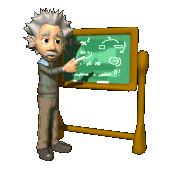Regents Physics - Introduction

What Is Physics?
So, you’ve decided to take on the challenge of learning physics… a noble pursuit, no doubt, but what have you gotten yourself into? What do you hope to accomplish with this newfound knowledge? Where ever will you use what you learn? Why go to all this trouble?
Those are some pretty deep questions, which hopefully you’ve started to think about if you haven’t previously. The answers, though personal, may be helped by first answering the question, “What is Physics?”
Physics is many things to many different people. If you look up physics in the dictionary, you’ll probably learn physics has to do with matter, energy, and their interactions. But what does that really mean? What is matter? What is energy? And how do they interact? And most importantly, why do we care?
Physics, in many ways, is the answer to the favorite question of most 2-year-olds: “Why.” What comes after the why really doesn’t matter. If it’s a “why” question, chances are it’s answered by physics. Why is the sky blue? Why does the wind blow? Why do we fall down? Why does Susie smell funny? Why do airplanes fly? Why do the stars shine? Why do I have to eat my vegetables? The answer to all these questions, and many more, ultimately reside in the realm of physics.
Matter
If physics is the study of matter, then we probably ought to define matter. Matter, in scientific terms, is anything that has mass and takes up space. So what's mass? Mass is, in simple terms, the amount of "stuff" you're made up of. Phrased more practically, matter is anything you can touch – from objects smaller than electrons to stars hundreds of times larger than our sun. From this perspective, physics is the mother of all science. Astronomy to zoology, all other branches of science are subsets of physics, or specializations inside the larger discipline of physics.
Energy
If it’s not matter, what’s left? Why, energy, of course. Energy is such an everyday term that encompasses so many areas, an accurate definition can be quite elusive. Physics texts oftentimes define energy as the ability or capacity to do work. It’s a nice, succinct definition, but leads to another question – what is work? Work can also be defined many ways, but let’s start with the process of moving an object. If we put these two definitions together, we can vaguely define energy as the ability or capacity to move an object.
Mass – Energy Equivalence

Our definition of physics so far boils down to the study of matter, energy, and their interactions. Around the turn of the 20th century, however, several physicists began proposing a strong relationship between matter and energy. Albert Einstein, in 1905, formalized this with his famous formula E=mc2, which relates that the mass of an object, a key characteristic of matter, is really a measure of its energy. Just what Einstein’s famous formula actually means in a philosophical sense is debated by physicists to this day. For our purposes, however, we can feel confident in expressing that matter and energy are extremely closely related, and the depth to which they are related remains under study.
Answering the Question

Physics, in some sense, can therefore by defined as the study of just about everything. Try to think of something that isn’t physics – go on, I dare you! Not so easy, is it? Even the more ambiguous topics can, in some sense, be categorized as physics. A Shakespearean sonnet? Typically read from a manuscript (matter), and sensed by the conversion of light (energy) alternately reflected and absorbed from a substrate, focused by a lens in the eye, and converted to chemical and electrical signals by photoreceptors on the retina, and transferred as electrical and chemical signals along the neural pathways to the brain. And that’s just the high-level analysis. In short, just about everything is physics from a certain perspective.
As this is an introductory course in physics, we’ll limit our scope somewhat as we build up a foundational understanding of the world around us. We’ll begin with a study of Newtonian Mechanics, which explores moving objects and their interactions. From there, we’ll move into electricity and magnetism. We’ll then combine moving objects and electromagnetism as we dive into sound and physical waves. Then, using what we’ve learned about physical waves, we’ll expand into electromagnetic waves and optics. Finally, we’ll end the year looking at matter again, this time at the nuclear level, using our background in mechanics, electricity and magnetism, waves, and optics to build a deeper understanding of the building blocks of our universe.
Join me as we take our first steps into a better understanding of the universe we live in.

